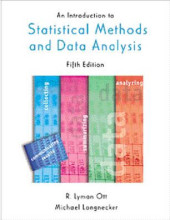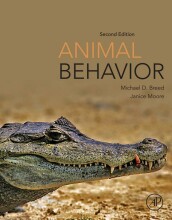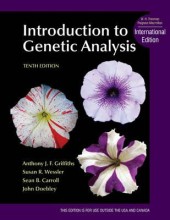Mapping eakaryote chromosomes by recombination
25 important questions on Mapping eakaryote chromosomes by recombination
The “distance” between two linked gene pairs where 1 percent of the products of meiosis are recombinant; a unit of distance in a linkage map.
A representation of all chromosomes in the genome as lines, marked with the positions of genes known from their mutant phenotypes, plus molecular markers. Based on analysis of recombinant frequency
The exchange of corresponding chromosome parts between homologs by breakage and reunion.
- Higher grades + faster learning
- Never study anything twice
- 100% sure, 100% understanding
Meiotic product cells with chromosomes that have engaged in a crossover.
The autoradiographic banding pattern produced when DNA is digested with a restriction enzyme that cuts outside a family of VNTRs (variable number of tandem repeats) and a Southern blot of the electrophoretic gel is probed with a VNTR-specific probe. Unlike true fingerprints, these patterns are not unique to each individual organism.
A DNA break cleaving the sugar– phosphate backbones of both strands of the DNA double helix
A linear pattern of spore phenotypes within an ascus for a particular allele pair, produced when the alleles go into separate nuclei at the first meiotic division, showing that no crossover has taken place between the allele pair and the centromere.
A distance on the chromosome map corresponding to 1 percent recombinant frequency.
DNA in which there is one or more mismatched nucleotide pairs in a gene under study.
A chromosome map; an abstract map of chromosomal loci that is based on recombinant frequencies.
The situation in which two genes are on the same chromosome as deduced by recombinant frequencies less than 50 percent.
A formula expressing the relation between distance in a linkage map and recombinant frequency.
A difference in DNA at the same locus in two genomes that is due to different repeat lengths of a microsatellite.
Heterozygous locus representing a variable number of tandem repeats of a unit 15 to 100 nucleotides long.
An ascus containing eight ascospores, produced in species in which the tetrad normally undergoes a postmeiotic mitotic division.
The ordered and oriented map of cloned DNA fragments on the genome.
A mathematical distribution giving the probability of observing various numbers of a particular event in a sample when the mean probability of an event on any one trial is very small.
The proportion (or percentage) of recombinant cells or individuals.
A difference in DNA sequence between individuals or haplotypes that is recognized as different restriction fragment lengths. For example, a nucleotide-pair substitution can cause a restrictionenzyme-recognition site to be present in one allele of a gene and absent in another. Consequently, a probe for this DNA region will hybridize to different-sized fragments within restriction digests of DNAs from these two alleles.
A pattern of ascospore genotypes for a gene pair showing that the two alleles separate into different nuclei only at the second meiotic division, as a result of a crossover between that gene pair and its centromere; can be detected only in a linear ascus.
The existence in the population of individuals showing different numbers of copies of a short simple DNA sequence at one chromosomal locus.
A nucleotidepair difference at a given location in the genomes of two or more naturally occurring individuals.
A testcross in which one parent has three heterozygous gene pairs.
In a heterozygote with two mutant sites within a gene or gene cluster, the arrangement a1 +/+ a2.
A chromosomal locus at which a particular repetitive sequence is present in different numbers in different individuals or in the two different homologs in one diploid individual.
The question on the page originate from the summary of the following study material:
- A unique study and practice tool
- Never study anything twice again
- Get the grades you hope for
- 100% sure, 100% understanding
































